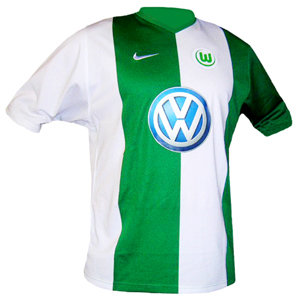Federal state: Niedersachsen
Population: 121 000
Area: 204 km2
Rivers: Mittellandkanal
Location: 52° 25' N 10° 47' O
 History Wolfsburg is one of the few new towns founded in Germany in the first half of the 20th century, and will be 70 this year. The city was specifically established to manufacture the VW Beetle, an iconic vehicle which was to become a symbol for all that was good about "made in Germany", and a shining example of Germany's prowess in automobile manufacturing.
History Wolfsburg is one of the few new towns founded in Germany in the first half of the 20th century, and will be 70 this year. The city was specifically established to manufacture the VW Beetle, an iconic vehicle which was to become a symbol for all that was good about "made in Germany", and a shining example of Germany's prowess in automobile manufacturing. 
Following the laying of the foundation stone for the VW factory on 26 May 1938, the President of the Province of Hanover approved the foundation of the "City of the KdF Car near Fallersleben" as of 1 July 1938. The original plan envisaged a modern industrial town of 90,000 to 100,000 inhabitants, laid out on the lines of a Garden City with extensive open space dividing living, working and transportation zones.

However, the war put an end to the KdF Car project and the national socialist concept of an exemplary working-class community. Instead, forced labourers and POWs turned out military equipment at the plant. Two-thirds of the factory was destroyed in the war, but the residential areas survived almost unscathed. On 25 May 1945, Wolfsburg received its present name after the eponymous castle in the city.

The decision of the British occupying forces not to demolish the factory would have far-reaching repercussions for the town. The arrival of refugees in their thousands provided plenty of manpower. The stage was set for the dramatic economic recovery of the 50s and 60s, as the Beetle came to symbolise the Wirtschaftswunder, the German economic miracle. The one millionth Beetle came off the line in 1955.

Portrait In 1972, as a result of local government reforms in Lower Saxony appending nearby communities to the town, Wolfsburg's population broke the 100,000 barrier and it officially became a major urban area. Autostadt, a theme park located to the north of the Mittelland canal devoted to automobiles, opened its doors in 2000.

The inaugural match at the city's new football stadium to the east of Autostadt took place two years later. Wolfsburg is the leading economic and commercial centre in Lower Saxony. The southern approach to the city is marked by numerous culturally significant buildings, such as the Alvar Aalto cultural centre housing the muicipal library and adult education centre, a theatre designed by Hans Scharoun, a Planetarium and the new Arts Museum.

Wolfsburg also hosts an Italian government cultural institute. "Young life in the old castle" is the umbrella philosophy for the activities at the Renaissance castle, a complete contrast to the ultra-modern city. The programme includes contemporary art, artistic and educational workshops, music and theatre events and a museum.
The Museum for Poetry and Democracy in the 19th Century at Fallersleben Castle illustrates an important aspect of German history. Private cultural initiatives have also increasingly emerged in recent years, growing out of an active club and association scene. Wolfsburg's parks boast a total area almost twice as large as Central Park in New York. The city's most famous son is the poet Hoffmann von Fallersleben, who wrote the words to the German national anthem ( Das Lied der Deutschen).

Sights
Autostadt
Allerpark
Fallersleben Castle
Burg Neuhaus
Arts Museum
Autostadt
Allerpark
Fallersleben Castle
Burg Neuhaus
Arts Museum

Football VfL Wolfsburg is one of the very few German clubs to field teams in both the men's and the women's Bundesliga. The men were promoted to the top flight in 1997. The women's team was formed in 2003, after the WSV Wendschott women's Bundesliga team was incorporated into VfL Wolfsburg-Fußball GmbH. Women's football has been a success in Wolfsburg since 1973. Now-defunct VfR Eintracht Wolfsburg reached the 1984 German Cup final but fell 2-0 to SSG Bergisch Gladbach.




No comments:
Post a Comment